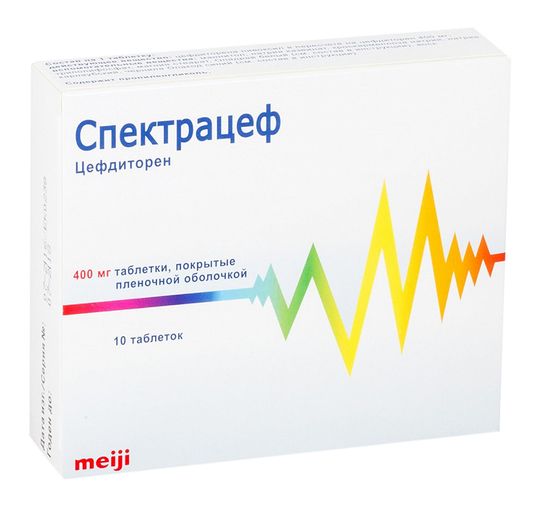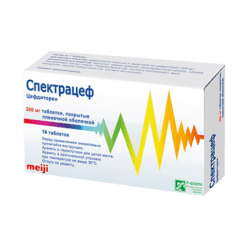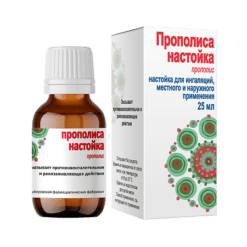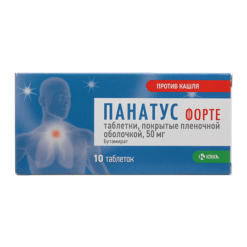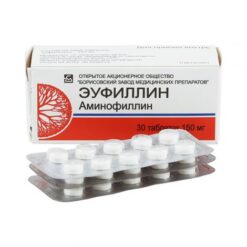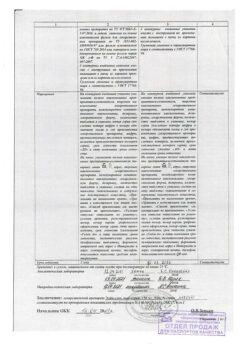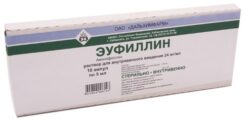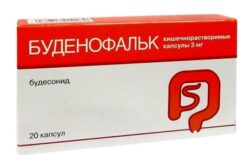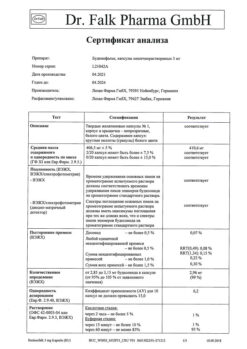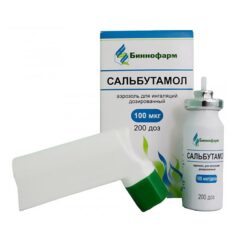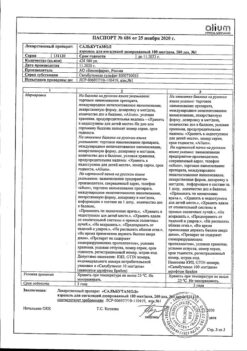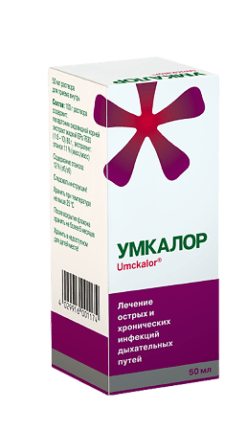No products in the cart.
Spectraceph, 400 mg 10 pcs
€42.52 €35.43
Description
Treatment of infections caused by microorganisms sensitive to ceftiditorin:
– upper respiratory tract infections: acute tonsillopharyngitis, acute maxillary sinusitis;
– lower respiratory tract infections: exacerbation of chronic bronchitis, community-acquired pneumonia;
– uncomplicated infections of the skin and subcutaneous fatty tissue: phlegmon, infected skin wounds, abscess, folliculitis, impetigo and furunculosis.
Indications
Indications
Treatment of infections caused by microorganisms sensitive to cefditoren:
– upper respiratory tract infections: acute tonsillopharyngitis, acute sinusitis;
— lower respiratory tract infections: exacerbation of chronic bronchitis, community-acquired pneumonia;
– uncomplicated infections of the skin and subcutaneous fat: phlegmon, infected skin wounds, abscess, folliculitis, impetigo and furunculosis.
Pharmacological effect
Pharmacological effect
Treatment of infections caused by microorganisms sensitive to cefditoren:
– upper respiratory tract infections: acute tonsillopharyngitis, acute sinusitis;
— lower respiratory tract infections: exacerbation of chronic bronchitis, community-acquired pneumonia;
– uncomplicated infections of the skin and subcutaneous fat: phlegmon, infected skin wounds, abscess, folliculitis, impetigo and furunculosis.
Special instructions
Special instructions
If a hypersensitivity reaction develops, treatment should be discontinued and the patient prescribed the necessary treatment.
As with other broad-spectrum antibiotics, treatment with cefditoren may lead to an overgrowth of resistant microflora. For this reason, monitoring of patients receiving this drug is recommended, especially in case of long-term treatment.
In patients with severe renal impairment, periodic monitoring of renal function is recommended.
During the course of treatment with cephalosporins, a decrease in prothrombin activity is possible. For this reason, in patients at risk (with renal or hepatic insufficiency or in the case of previous prescription of anticoagulants), monitoring of prothrombin time is necessary.
The development of diarrhea during or after treatment, especially if it is severe, persistent and contains blood, may indicate pseudomembranous colitis. In mild cases of diarrhea, simply discontinuing the drug is sufficient; in more severe cases, antibiotic therapy, to which Clostridium difficile is sensitive, and infusion therapy are indicated.
Like other cephalosporins, cefditoren may cause a false-positive result from the direct Coombs test, the detection of glucose in urine by the copper reduction test, but not by the enzyme test. Due to the high risk of a false negative result from the ferricyanide test for determining plasma or blood glucose, it is recommended that during treatment with cefditoren, patients use glucose oxidase or glucose hexokinase methods to determine the concentration of glucose in the blood or plasma.
When cephalosporins are combined with aminoglycosides and/or loop diuretics, especially in patients with impaired renal function, the risk of nephrotoxicity may increase.
Spectracef contains approximately 13.1 mg (for 200 mg tablets) and 26.2 mg (for 400 mg tablets) sodium per dose, which should be considered when prescribing the drug to patients on a low-sodium diet.
Impact on the ability to drive vehicles and operate machinery
The effect of cefditorene pivoxil on the ability to drive a car and/or use other machines has not been reported. At the same time, it should be borne in mind that taking Spectracef may be accompanied by undesirable effects such as vomiting and headache.
Active ingredient
Active ingredient
Cefditoren
Composition
Composition
White, elliptical, film-coated tablets, marked “TFM” in blue on one side;
On a cross section, the kernel is light yellow.
1 tab:
cefditoren 400 mg
(as cefditorene pivoxil)
Excipients:
– Mannitol as needed (approximately 35 mg),
– Sodium caseinate 100 mg,
– Croscarmellose sodium 150 mg,
– Sodium tripolyphosphate 4 mg,
– Magnesium stearate 5 mg,
– Opadry white 35 mg (hypromellose 21.9 mg, titanium dioxide 10.9 mg, macrogol-400 2.2 mg),
– Carnauba wax 0.06 mg,
– Opacode blue ink (shellac IN IMS 74 OP 50.41%, N-butanol 24.35%, dye-based aluminum varnish
brilliant blue FCF 11.25%, titanium dioxide 4.49%, propylene glycol 2.91%, isopropanol 4.65%,
ammonia solution concentrated 1.94%).
Pregnancy
Pregnancy
Pregnancy
Clinical data on the use of cefditoren pivoxil in pregnant women have not been obtained. Although animal studies have not shown embryotoxic or teratogenic effects of the drug, Spectracef should not be used during pregnancy unless the expected benefit to the mother outweighs the potential risk to the fetus.
Lactation period
There is insufficient data on the penetration of cefditoren into breast milk. Therefore, breastfeeding should be discontinued when using Spectracef.
Contraindications
Contraindications
hypersensitivity to cefditoren, other cephalosporins or any other component of the drug.
– severe allergic reactions to penicillins and other beta-lactam antibacterial drugs;
– liver failure class C according to Child-Pugh;
– patients on hemodialysis;
– history of hypersensitivity reactions to casein protein;
– primary carnitine deficiency;
– children under 12 years of age;
– simultaneous use of cefditoren pivoxil and histamine H2 receptor blockers.
With caution: patients with hypersensitivity to other beta-lactam antibiotics due to the possibility of developing cross-allergic reactions; simultaneous use with aminoglycosides and diuretics (furosemide); patients with gastrointestinal pathology (including a history of colitis).
Side Effects
Side Effects
The adverse events presented below are listed depending on the anatomical and physiological classification and frequency of occurrence. The frequency of occurrence is defined as follows: very common (≥1/10), common (≥1/100 and <1/10), uncommon (≥1/1000 and <1/100), rare (≥1/10,000 and <1/1,000), very rare (<1/10,000, including isolated cases).
Metabolism and nutrition: rarely – anorexia.
From the nervous system: often – headache; rarely – nervousness, dizziness, insomnia, drowsiness, sleep disorders.
On the part of the organ of vision: very rarely – photosensitivity.
From the ENT organs: very rarely – pharyngitis, rhinitis, sinusitis, ringing in the ears.
From the respiratory system, chest and mediastinal organs: very rarely – bronchospasm.
From the gastrointestinal tract: very often – diarrhea; often – nausea, abdominal pain, dyspepsia; rarely – constipation, flatulence, vomiting, oral candidiasis, belching, pseudomembranous colitis, dry mouth, perversion of taste; very rarely – aphthous stomatitis.
From the liver and biliary tract: rarely – impaired liver function.
From the skin and subcutaneous fat: rarely: rash, itching, urticaria.
From the musculoskeletal system and connective tissue: very rarely – myalgia.
From the genitourinary system: often: candidal vaginitis; rarely – vaginitis, leucorrhoea.
Other: rarely – fever, asthenia, generalized pain syndrome, increased sweating.
From laboratory parameters: sometimes – leukopenia, thrombocytosis, increased concentration of alanine aminotransferase (ALT); rarely – increased clotting time, hyperglycemia, hypokalemia, bilirubinemia, increased concentrations of aspartate aminotransferase (AST), alkaline phosphatase, albuminuria.
In addition, isolated cases of eosinophilia, thrombocytopenia, decreased thromboplastin time, thrombocytopathies, increased lactate dehydrogenase (LDH) concentrations, hypoproteinemia and increased creatinine concentrations have been described.
on the part of the hematopoietic organs: hemolytic anemia, lymphadenopathy.
From the side of water-electrolyte metabolism: dehydration.
From the psyche: dementia, depersonalization, emotional lability, euphoria, hallucinations, thought disorder, increased libido, collapse.
From the nervous system: amnesia, loss of coordination, muscle hypertonicity, meningitis, tremor.
From the organ of vision: weakened vision, disturbances from the organ of vision, pain in the eyes, blepharitis.
From the cardiovascular system: atrial fibrillation, heart failure, tachycardia, ventricular extrasystole, postural hypotension.
From the gastrointestinal tract: hemorrhagic colitis, ulcerative colitis, gastrointestinal bleeding, glossitis, hiccups, discoloration of the tongue.
From the urinary system: dysuria, pain in the kidneys, nephritis, nocturia, polyuria, urinary incontinence, urinary tract infection.
From the genitourinary system: pain in the mammary glands, menstrual irregularities, metrorrhagia, erectile dysfunction.
Other: unpleasant body odor, chills.
Allergic reactions: allergic reactions, including Stevens-Johnson syndrome, erythema multiforme, serum sickness, toxic epidermal necrolysis.
From the urinary system: impaired renal function, toxic nephropathy.
From the liver and biliary tract: cholestasis.
From the hematopoietic organs: aplastic anemia.
Interaction
Interaction
Antacids
The combined use of cefditoren pivoxil and antacids containing magnesium and aluminum hydroxide after meals reduces the Cmax and AUC of cefditoren by 14% and 11%, respectively. Although the clinical significance of this finding is unknown, it is recommended that the interval between administration of antacids and cefditoren pivoxil be 2 hours.
Probenecid
Co-administration of probenecid and cefditoren pivoxil reduces renal excretion of the antibiotic, increasing Cmax by 49%, AUC by 122% and increasing the half-life of cefditoren by 53%.
H2-histamine receptor blockers
Concomitant administration of famotidine intravenously and cefditorene pivoxil orally leads to a decrease in Cmax and AUC by 27% and 22%, respectively. Thus, the simultaneous use of cefditoren pivoxil and histamine H2 receptor blockers is not recommended.
Overdose
Overdose
Symptoms
In case of an overdose of the drug, the patient may experience symptoms such as nausea, vomiting, diarrhea.
Treatment
If a clinical picture of a drug overdose develops, symptomatic therapy is indicated.
Manufacturer
Manufacturer
Tedek Meigi Pharma S.A., Spain
Additional information
| Manufacturer | Tedek Meiji Pharma S.A., Spain |
|---|---|
| Medication form | pills |
| Brand | Tedek Meiji Pharma S.A. |
Other forms…
Related products
Buy Spectraceph, 400 mg 10 pcs with delivery to USA, UK, Europe and over 120 other countries.

